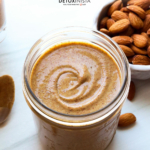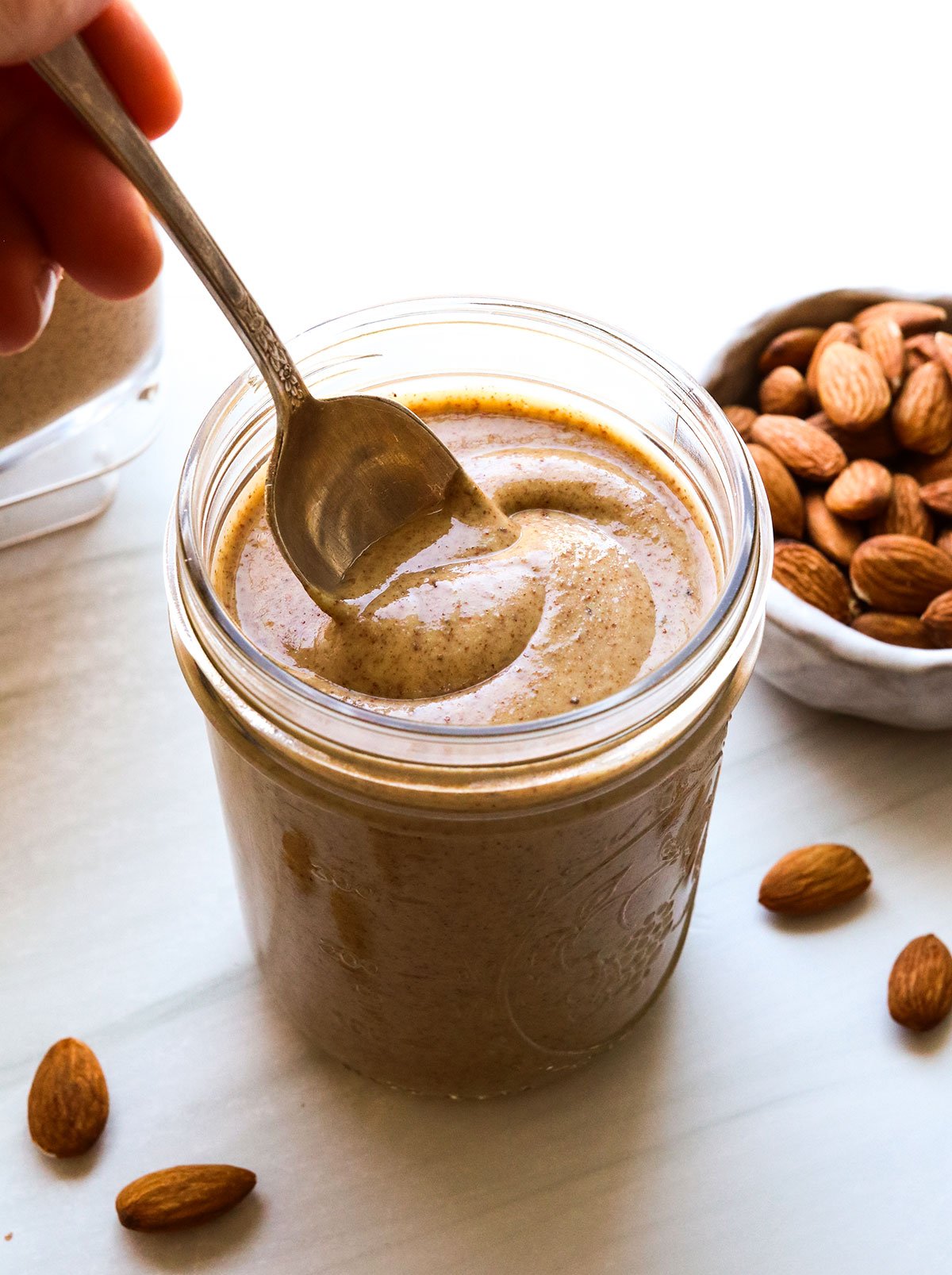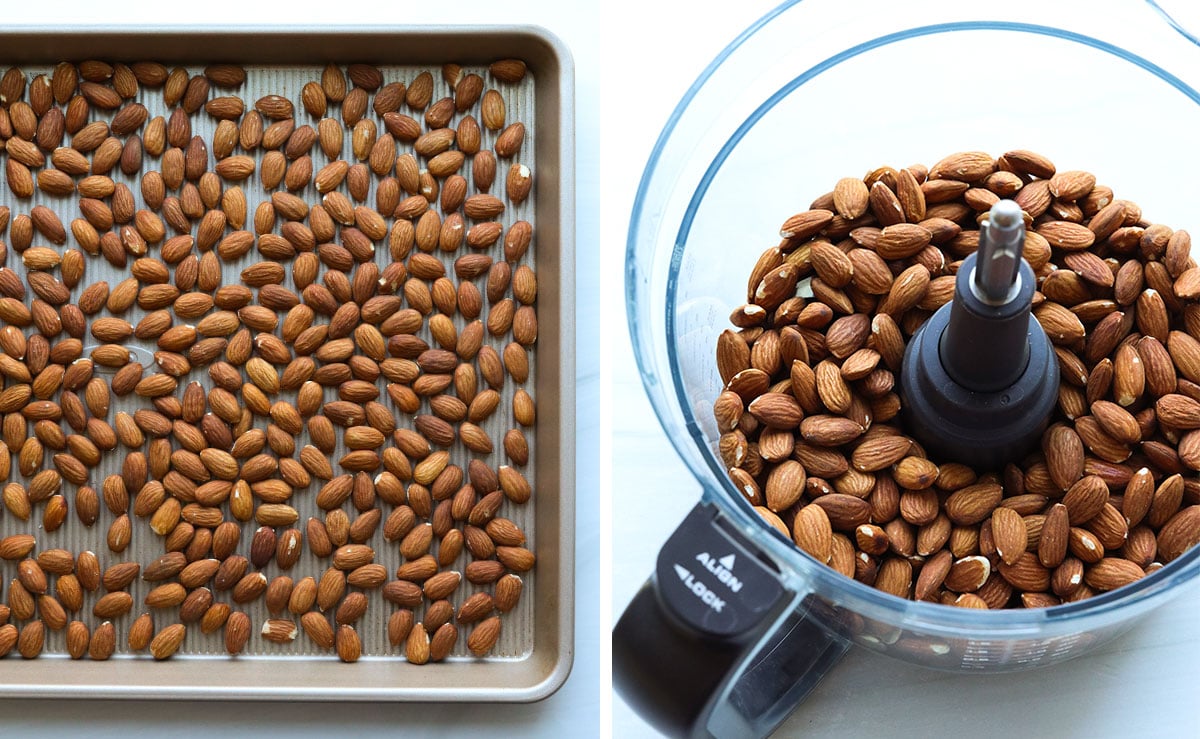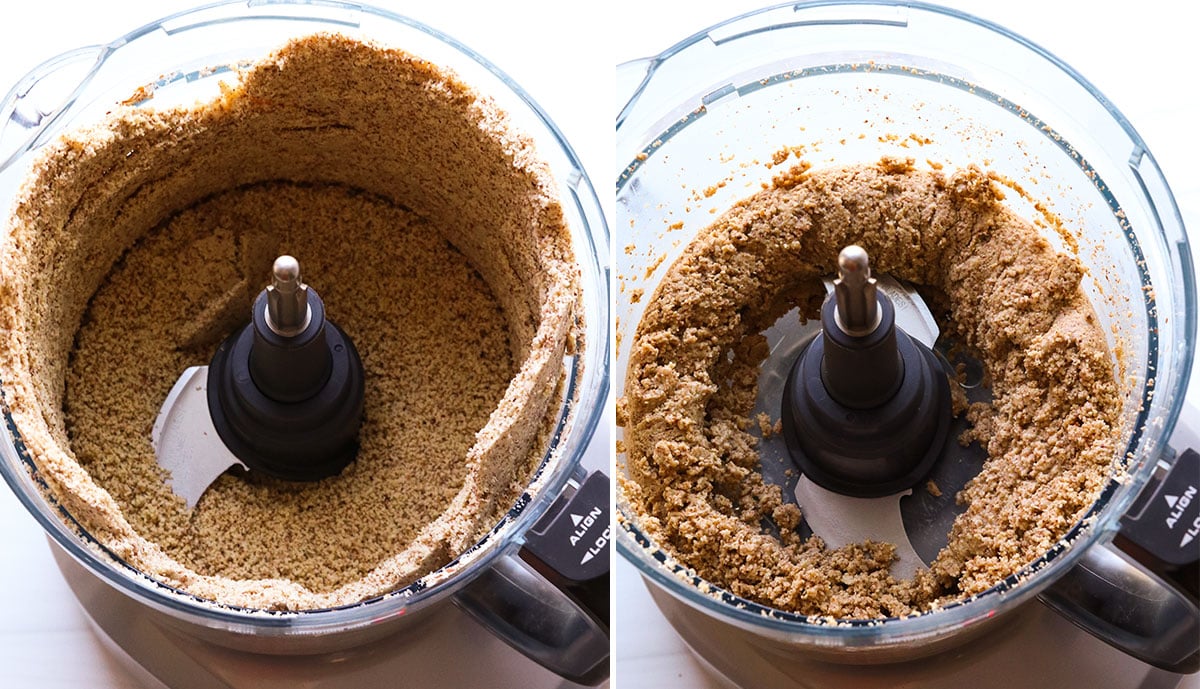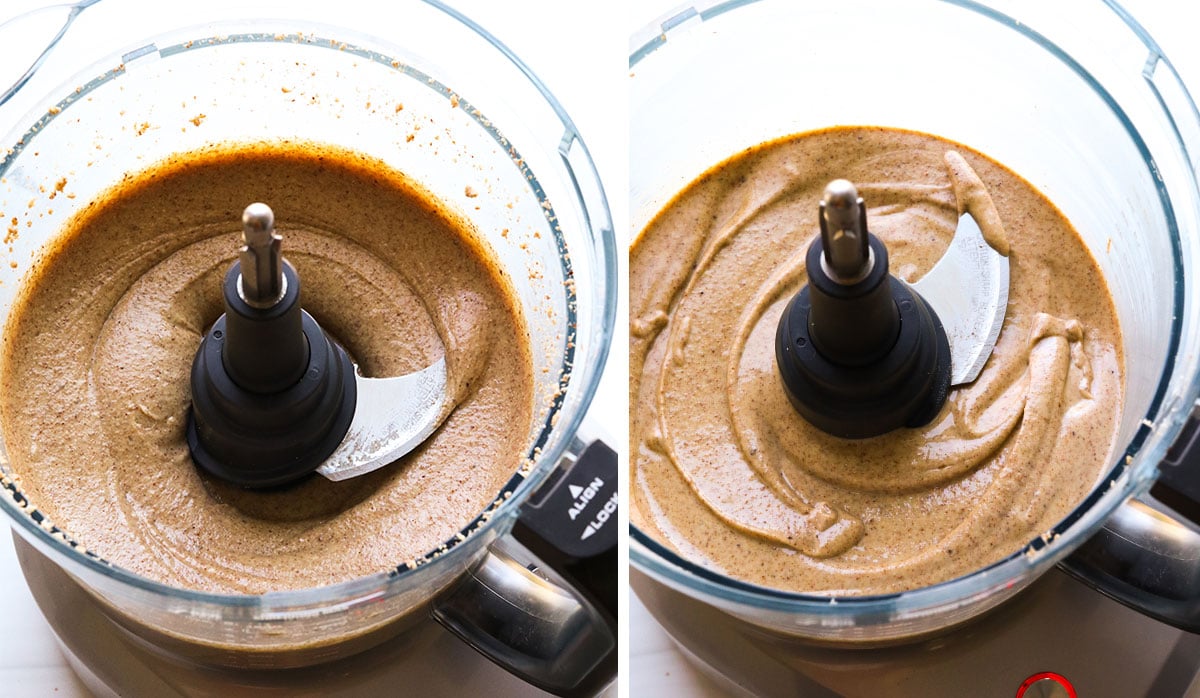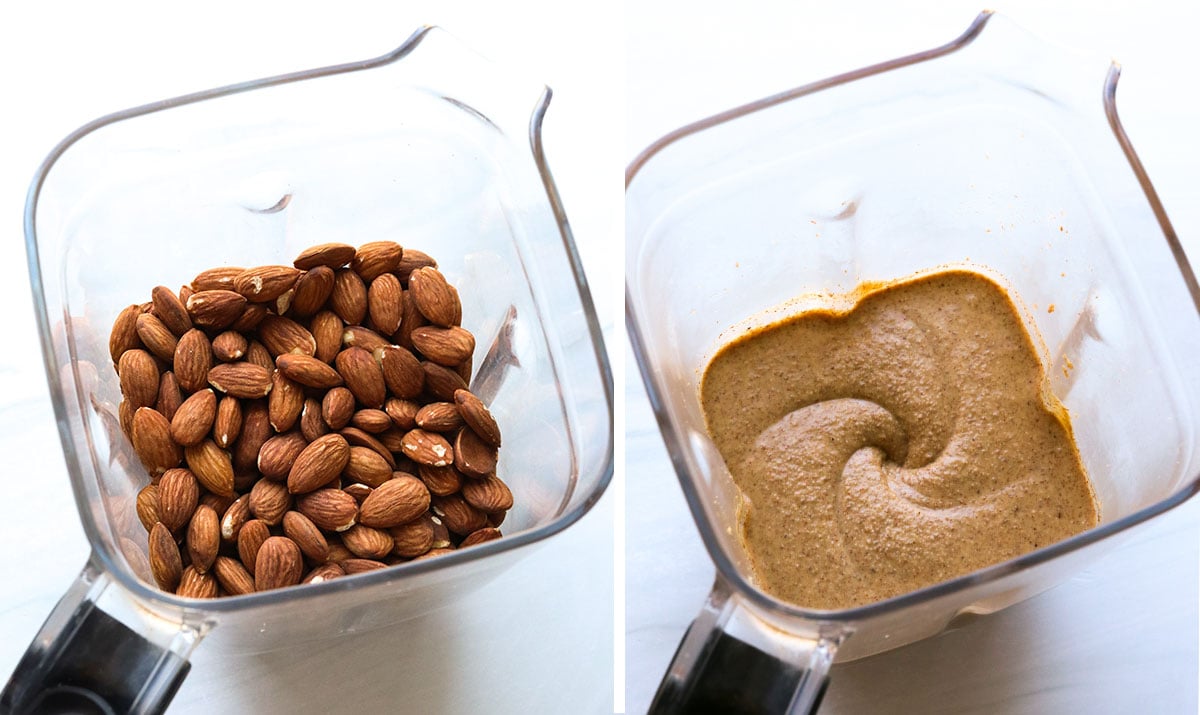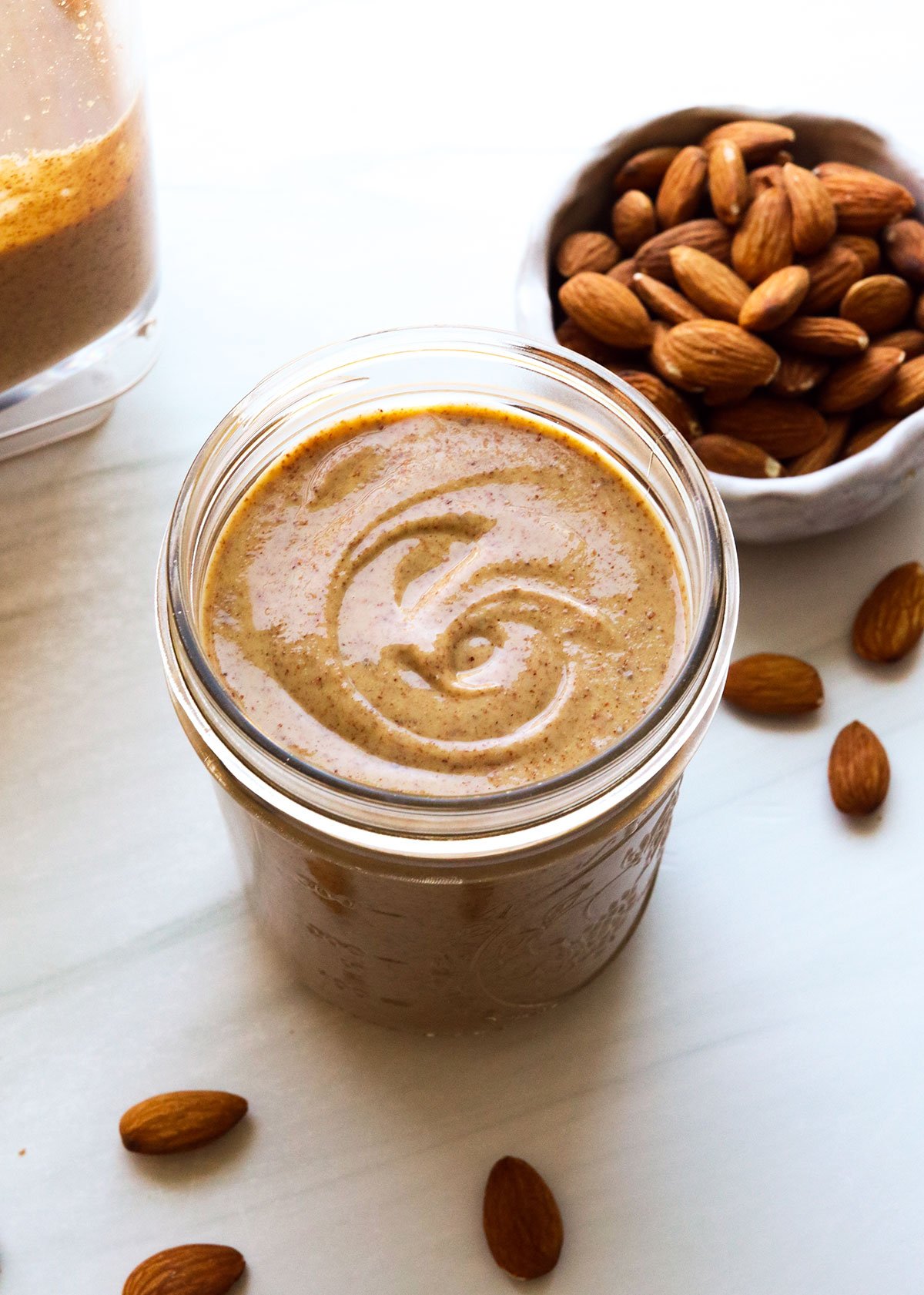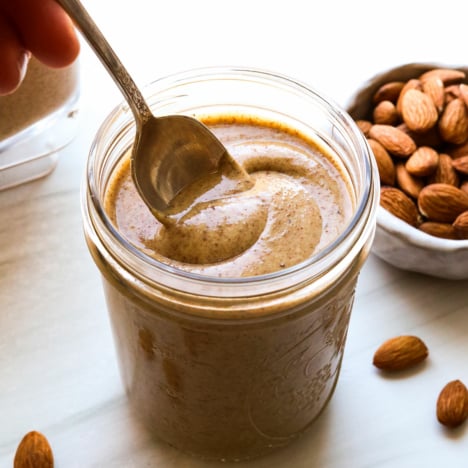Almond butter has gained popularity over the years as an alternative to peanut butter, and for good reason. It’s loaded with minerals and tastes delicious! It’s the perfect addition to healthy snacks, like Apple Nachos and Homemade Granola Bars. Creamy almond butter can even be used as a flour alternative in gluten-free baking. Try it in Almond Butter Cookies or Almond Butter Blondies. You can also use it for dairy-free creaminess! My favorite way to use it is in my Vegan Latte or Almond Milk Ice Cream for a mind-blowing treat.
Ingredients You’ll Need
Homemade almond butter is made with just one ingredient: almonds! Look for unroasted almonds when shopping, as you’ll be quickly roasting them during the first step of this recipe. You can also add salt or ground cinnamon for extra flavor, but I don’t recommend adding a wet ingredient, such as maple syrup, vanilla extract, or honey. Wet ingredients can cause the almond butter to seize (the texture will be ruined), and will make the nut butter spoil much faster.
How to Make Almond Butter
Preheat the oven to 350ºF and spread one pound (3 cups) of almonds out in a single layer on a rimmed baking sheet. Roast the almonds for 10 minutes or until they smell lightly fragrant. This process helps release the natural oil found in almonds and will make the next steps move much faster. Remove the pan from the oven and let the almonds cool for 10 to 15 minutes. Adding the almonds directly from the oven to a food processor or blender could melt the machine if you don’t let them cool down first, so be patient! Once the almonds have cooled for at least 10 minutes (it’s okay if they feel warm to the touch) add them to the bowl of a large food processor fitted with an “S” blade. Secure the lid and start processing. The almonds will creep up the sides of the machine as you blend them, so you can stop and scrape down the sides with a spatula if you’d like to. However, I’ve noticed around the 4-minute mark that the almonds will naturally fall down on their own without any scraping. Let the food processor continue to run. After 8 minutes of processing, you may start to hear a “sloshing” sound, as the almond butter has suddenly become runnier. This is a great sign! Now you can stop and scrape down the sides of the machine, and add any seasoning you like, such as a 1/2 teaspoon of fine sea salt or ground cinnamon. (Remember, no liquids can be added or it will ruin the texture.) Process for another minute or two, and you should have a creamy almond butter that drips off the spoon. The whole blending process should take 10 minutes or less when you start with warm almonds. Note: If you need to skip the roasting process, it may take nearly double the time for raw almonds to break down in a food processor. It can be done, but it’s definitely harder on your machine and requires more patience. This process can take a full 20 minutes! Transfer the homemade almond butter to a 16-ounce mason jar and let it cool completely before securing the lid. Otherwise, steam will collect in the jar and cause the almond butter to spoil faster. Almond butter can be stored in the fridge for up to 2 weeks and may last even longer as long as you don’t introduce any moisture to the jar. Nut butter will thicken when chilled, so that can make it slightly harder to spread on toast, but it will thin out when you bring it to room temperature again. When you have almond butter on hand, making almond milk is easier, too!
Making Almond Butter in a Blender
If you don’t have a 12-cup food processor, but you do have a high-speed blender (like a Vitamix), that can be used to make homemade almond butter, too. The difference is you’ll need to use more almonds and a tamper. To make almond butter in a blender, roast and cool the almonds as directed above, but start with 4 cups of almonds. This is the minimum quantity required to use a blender. Secure the lid and blend the almonds on a medium-low speed. You’ll need to use a tamper often to keep the almonds moving. (If your blender doesn’t have a tamper, I don’t recommend this method. It’s too frustrating to have to stop and scrape constantly!) While you might think using a high-speed blender would be faster than using a food processor, it still took my blender 6 to 7 minutes to achieve a creamy result. This is only 1 minute faster than the food processor method, and it’s not nearly as hands-off. So, if you have a food processor, that is my preferred machine for this recipe. Looking for more easy ways to use almond butter? Try it in my Banana Snack Cake, Freezer Fudge, Vegan Banana Bread, or Almond Butter Brownies. If you try this homemade almond butter recipe, please leave a comment and star rating below letting me know how you like it. SaveSave
